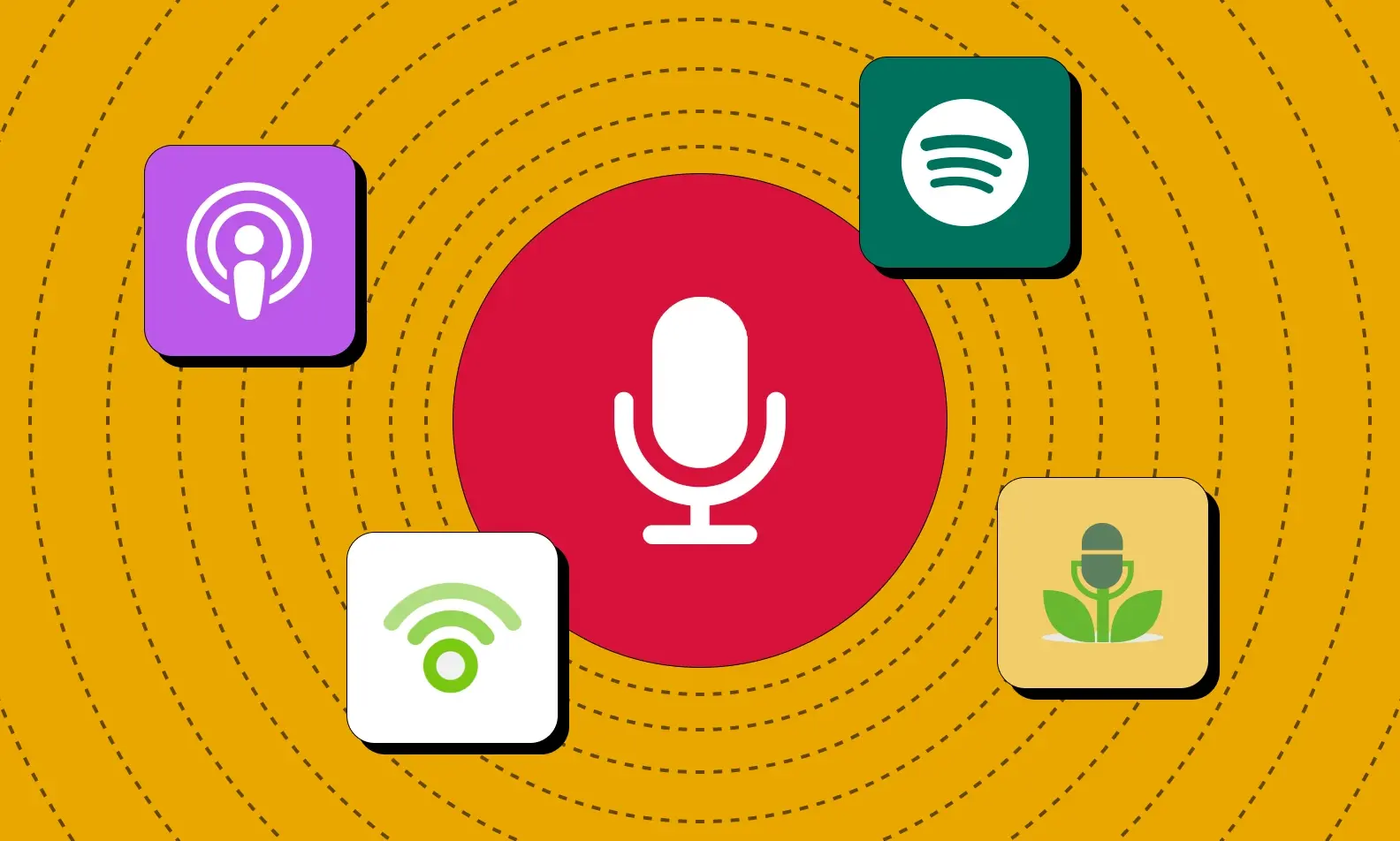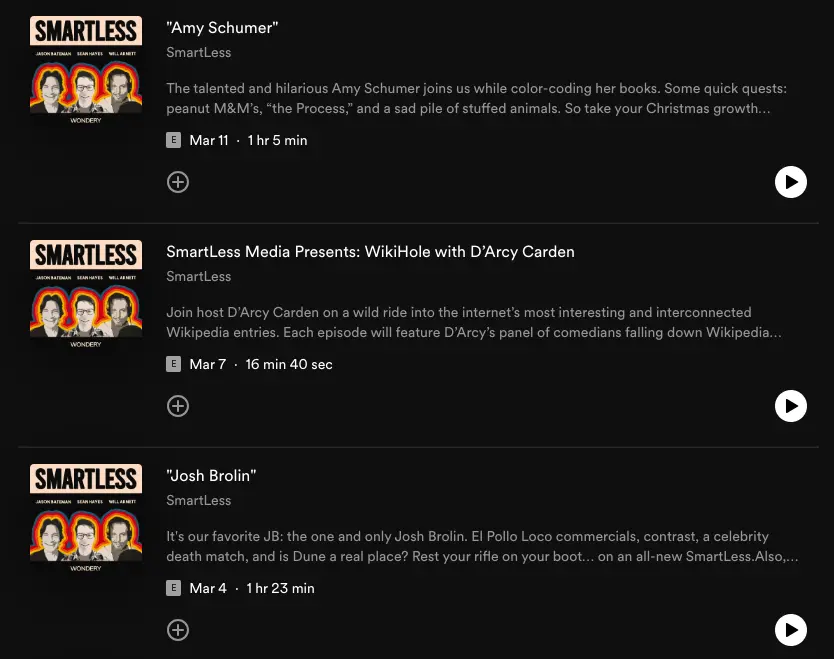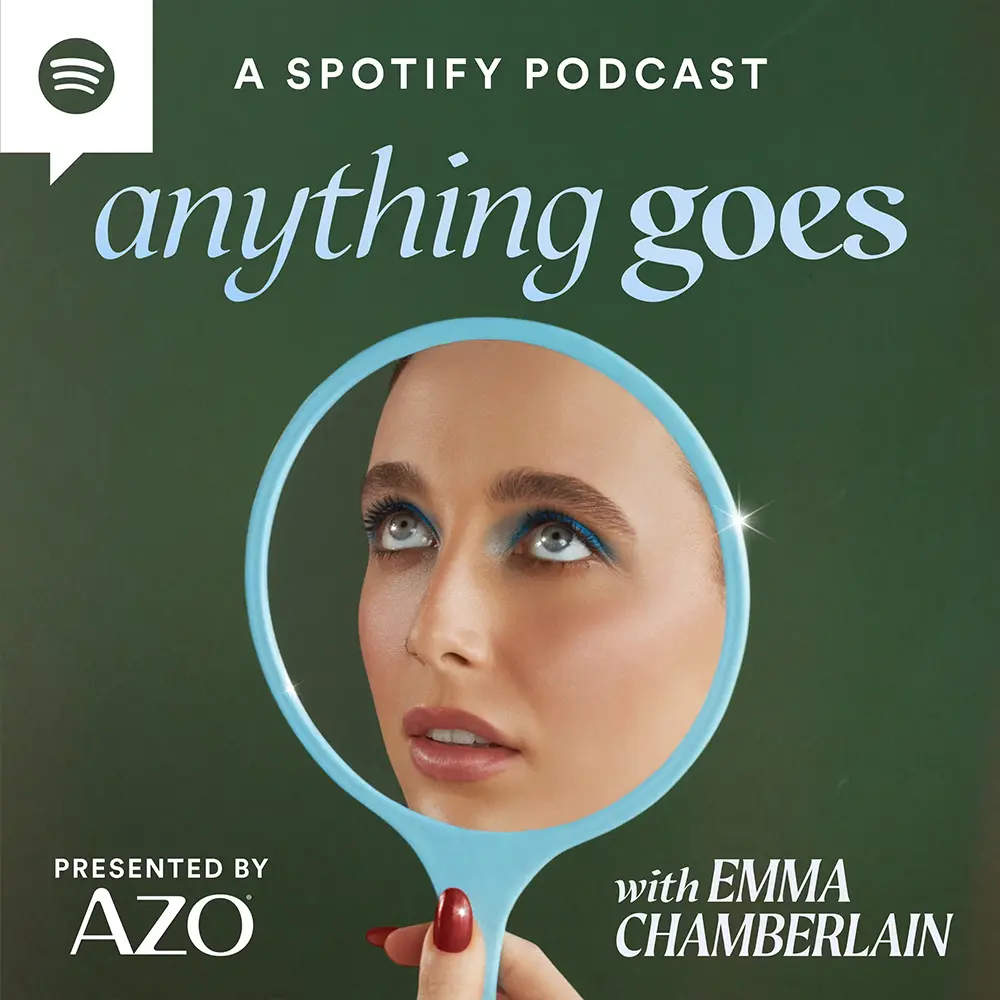How to Start a Podcast For Free: Step-by-Step Guide (2026)

Podcasting has become a powerful and popular medium for creators to share their stories, insights, and expertise. With over 3 million podcasts available and millions of listeners tuning in regularly, it's clear that podcasting has revolutionized the way we consume content and connect with others in today's digital age.
What's even more enticing is that you don't need a hefty budget to join the podcasting revolution. Unlike traditional media formats, podcasting offers a low barrier for entry, making it accessible to anyone with a microphone, an internet connection, and a compelling idea. Whether you're a seasoned professional or an aspiring enthusiast, podcasting provides a platform for everyone to express themselves and engage with audiences worldwide.
In this article, we'll guide you through the process of starting a podcast for free and emphasizing the accessibility of this exciting medium. From crafting your concept to recording and promoting your episodes, we'll cover everything you need to know to launch your podcast with confidence and practically no cost.
Can You Create a Podcast for Free?
The burning question: Can you really create a podcast without breaking the bank? The answer is a resounding yes! Numerous free tools, resources, and platforms are available to aspiring podcasters. Whether you're a seasoned content creator or a beginner, the possibilities are endless. Let's explore the options and unveil the feasibility of launching a podcast with minimal financial investment.

Essentials for Starting Your Podcast
Concept and Planning
The foundation of any successful podcast lies in a clear concept and strategic planning. Start by identifying your podcast topic and defining what sets your show apart.
Understand your target audience and determine the unique value your podcast offers to them. Craft a roadmap for your episodes, outlining key themes, potential guests, and the overall tone.
This thoughtful planning ensures consistency and helps you create a podcast website or other online presence that reflects your vision.
Production
Producing high-quality audio is crucial to keeping listeners engaged, and it doesn’t have to break the bank. Here are a few key steps to point you in the right direction:
- Discover free recording software and editing tools to help you bring your episodes to life.
- Choose a reliable microphone that fits your budget and create a quiet space for recording.
- Use editing software to refine your episodes, remove background noise, and add music or effects.
By mastering these steps, you can produce professional-sounding episodes with minimal investment.
Hosting and Distribution
Finding the right hosting platform is essential for storing and sharing your podcast.
Explore free hosting services that provide the tools to upload and manage episodes.
Once your content is hosted, distribute your podcast to popular platforms like Spotify, Apple Podcasts, and Google Podcasts to maximize its reach.
With Fourthwall, you can take things a step further by uploading video podcasts directly to your site, giving your audience a more immersive experience.
You can also upload exclusive audio content and distribute it directly to Spotify, which is perfect for offering bonus episodes or subscriber-only perks.
Promotion and Engagement
Growing your podcast audience requires effective promotion and genuine engagement.
Leverage free promotional channels like social media, email newsletters, and collaborations with other creators.
Encourage listeners to interact with your content by leaving reviews, sharing episodes, and joining discussions.
Creating a vibrant community around your podcast topic will not only increase visibility but also foster loyal listeners who return for more.
How to Start a Podcast for Free: 8 Steps for Beginners
1. Choose Your Podcast Niche
Selecting your niche is a pivotal step in developing your podcast concept, as it significantly influences your ability to attract the right audience and maintain a commitment to your show.
Consider what kind of podcast you want to create and thoroughly define your goals, whether it's establishing yourself as an industry authority, telling compelling stories, or wanting to update your audience on current news or gossip. Understanding your motivations helps set realistic expectations, particularly recognizing that while some podcasters achieve widespread fame, most gradually cultivate a dedicated following over time.
Once you've established your goals, delve into selecting a specific theme or topic that resonates with you and is likely to engage your audience consistently. Conducting market research by exploring existing podcasts within your chosen genre on platforms like Apple Podcasts can provide valuable insights into potential points of differentiation and unique perspectives you can offer.
Emphasizing specificity in your niche not only attracts a more engaged audience but also increases the likelihood of word-of-mouth recommendations. Furthermore, naming your podcast is a critical aspect of branding, requiring a clear, concise, and memorable title that aligns with your content and is easily searchable.
Before finalizing your podcast name, it's advisable to check for availability across social media platforms and domains to avoid potential conflicts.
2. Plan Your Episodes and Format
Outline your episode structure and plan content that resonates with your audience. A well-thought-out format and a clear podcast script can keep listeners engaged and coming back for more.
Consider what energizes you most—whether it's connecting with guests, hosting solo episodes, or collaborating with co-hosts—and tailor your format accordingly. Using a podcast script, especially for solo episodes or detailed discussions, can help you stay organized and ensure you deliver your message effectively. If you opt for co-hosts, keeping the group small helps streamline scheduling, as managing more than two or three individuals can present logistical challenges.
Additionally, bear in mind that different formats require varying levels of production, with scripted fiction podcasts typically demanding more editing than interview-based shows. Common podcast formats include interviews, co-hosted discussions, scripted non-fiction narratives, news recaps, educational content, and scripted fiction. Crafting a podcast script for these formats can help you maintain consistency and ensure your content aligns with your intended narrative or objectives.
When determining the optimal episode length, prioritize delivering content that is as long as necessary to convey your message effectively without unnecessary padding. Episode durations vary widely, ranging from under five minutes to the length of a short audiobook. According to Buzzsprout Platform Statistics, the most common episode lengths fall within a specific bracket of 20–40 minutes long, with the second most common episode lengths falling under 40–60 minutes.
As for your podcast's publishing schedule, it's essential to strike a balance between consistency and feasibility based on your available resources and audience expectations. Using a podcast script for planning future episodes can streamline your workflow and maintain quality.
While podcasting frequency can vary widely–from daily releases to sporadic intervals like those on the groundbreaking series Serial–publishing once a week is a popular choice for building listener engagement and establishing a routine for consistent content creation.

3. Set Up Your Recording Space and Equipment
The great thing about starting a podcast is that you can pretty much do it from anywhere. Even though most big-name podcasters have their own recording studios, for beginners, creating a comfortable and quiet recording space in your own room using household items and basic podcast equipment is good enough.
Utilizing items such as blankets, pillows, or foam panels can help minimize background noise and create a comfortable space conducive to recording. In addition, consider factors like lighting and ergonomics to enhance your overall podcast production and ensure a pleasant experience for both you and your guests.
When it comes to microphones, chances are most beginning podcasters don’t have an external mic at their disposal. Fortunately, to get you started, all you really need is your phone or computer’s built-in mic to do the job. However, if you’re looking to make your voice really stand out, consider investing in good-quality podcast equipment, such as a podcast microphone, to enhance your content's production. Conduct research on microphone types, such as dynamic, condenser, or USB microphones, which can help you make informed decisions based on factors like budget, recording environment, and intended use.
Creating an effective recording space involves not only physical setup but also mastering techniques for optimizing audio quality during the recording process. Experimenting with microphone placement and utilizing podcast equipment like pop filters or windshields can help minimize unwanted sounds and ensure clear vocal recordings. Moreover, familiarizing yourself with basic audio editing techniques, such as noise reduction and equalization, can further enhance the overall quality of your podcast episodes.
4. Record and Edit Your Episodes
Master the art of podcast recording and editing with free podcast software tools that will help enhance your audio quality and maintain a professional sound throughout your episodes.
Popular options such as Audacity, GarageBand, or Ocenaudio provide accessible platforms for recording, podcast editing, and refining your audio content. These software packages offer a wide range of features, including multi-track recording, noise reduction, equalization, and audio effects, enabling you to enhance the overall quality of your recordings and maintain a consistent and professional sound throughout your episodes.
If you really want to master your craft, consider exploring tutorials and online resources specific to your chosen software. These can help you unlock advanced podcast editing techniques and enhance your workflow. By familiarizing yourself with these tools' capabilities and honing your editing skills, you can elevate the production value of your podcast and deliver content that captivates and engages your audience.
In addition to mastering technical aspects, having a good understanding of storytelling and pacing is essential for crafting compelling podcast episodes that resonate with your listeners. Experiment with different narrative structures, such as storytelling arcs, interview formats, or scripted segments that can help you develop a distinctive style and voice for your podcast.
Remember to pay attention to pacing and rhythm during the podcast editing process to enhance the flow of your episodes and maintain listener interest from start to finish.
5. Choose a Free Hosting Platform
Explore hosting platforms that offer free plans for podcasters. Fortunately, many podcast hosting platforms offer free plans tailored to the needs of beginners. However, the amount of content you can upload is very limited. It's essential to explore these options carefully, considering factors such as storage limits, bandwidth, and distribution capabilities.
Platforms like Anchor, Podbean, and Buzzsprout offer free hosting plans with varying features and limitations. You can choose one that aligns with your podcasting goals and budget.
Look for platforms that provide user-friendly interfaces and robust analytics tools. These tools will enable you to track your podcast's performance and audience engagement effectively.
In addition to hosting features, consider other aspects such as monetization options, customer support, and platform integrations with popular podcast directories like Apple Podcasts, Spotify, and Google Podcasts for visibility and reach. Some platforms offer monetization features like listener donations, sponsorship opportunities, or premium subscription tiers, allowing you to generate revenue from your podcasting efforts.
With Fourthwall, you can set up membership tiers and donation boxes on your site so that your listeners can help support the content they love while getting exclusive access to upcoming episodes or live recordings.
6. Create Eye-Catching Cover Artwork
Design eye-catching cover artwork that reflects your podcast's style and attracts potential listeners. Research indicates that 62% of new listeners are more likely to explore a podcast if they find its cover art appealing, highlighting the importance of investing time and effort into designing captivating visuals.
Adhere to technical specifications that ensure your artwork appears crisp and professional across various devices and platforms. Follow specific guidelines, such as using a square image (3000 x 3000 pixels) with a resolution of 72 dpi. Choose appropriate file types like PNG or JPEG and optimize color space and resolution to maximize the impact of your cover art.
Using free online design tools such as Canva, Adobe Spark, or Crello can streamline the process of creating compelling podcast cover art. These tools offer a range of customizable templates, graphics, and typography options to suit your artistic vision and branding needs.

7. Write an Engaging Podcast Description
Craft a compelling podcast description that clearly communicates your podcast's value. A well-written description can entice potential listeners to hit the play button.
Incorporate elements such as a captivating hook, a brief overview of topics covered, or any unique selling points and benefits that can help capture your target audience’s interest. Consider including keywords relevant to your podcast's niche or genre to improve discoverability in search results across podcast directories.
Studying the descriptions of successful podcasts within your genre can inspire you and provide valuable insights into effective language and formatting techniques.
Your description should include a brief introduction about yourself, your podcast, and why viewers should listen. You should also regularly update your podcast description to reflect new episodes, guest appearances, or special features that can help maintain relevance and engagement over time.
8. Promote Your Podcast
Utilize free promotional strategies to increase your podcast's visibility.
Making use of social media platforms such as Twitter (X), Facebook, Instagram, and LinkedIn allows you to share updates about new episodes, engage with your audience, and participate in relevant conversations within your niche community.
Create visually appealing graphics, teaser clips, or behind-the-scenes content that will grab your follower's attention and encourage them to tune into your podcast. If you’re doing a video podcast, post a snippet of an upcoming episode to entice listeners to download and listen.
If you really want to build a community around your podcast, consider creating separate social media accounts dedicated to your show. This not only gives you more creative opportunities to promote your podcast but also gives you a bigger bandwidth to reach new listeners and build a loyal fanbase.
Once your podcast has successfully built a tight-knit social media community, remember to actively engage with your audience by responding to comments or questions on any of your posts. This will help turn your listeners into dedicated advocates, inspiring them to share your podcast within their networks.
One last strategy you should implement when promoting your podcast is collaborating with other podcasters or creators in your niche. Whether it's through guest appearances, cross-promotions, or joint marketing efforts, collaborating with like-minded creators can be a mutually beneficial tactic that can help leverage both parties' platforms and increase audience visibility.
Launch Your Podcast and Build a Loyal Fan Base
Monetize your podcast from the get-go with Fourthwall. Say goodbye to clunky platforms and technical headaches. Fourthwall provides the tools to craft branded websites, monetize with ease, and reach ideal audiences. Launch your podcast confidently, knowing you have the support you need to succeed. Sign up with Fourthwall today and turn your content into profit.
















